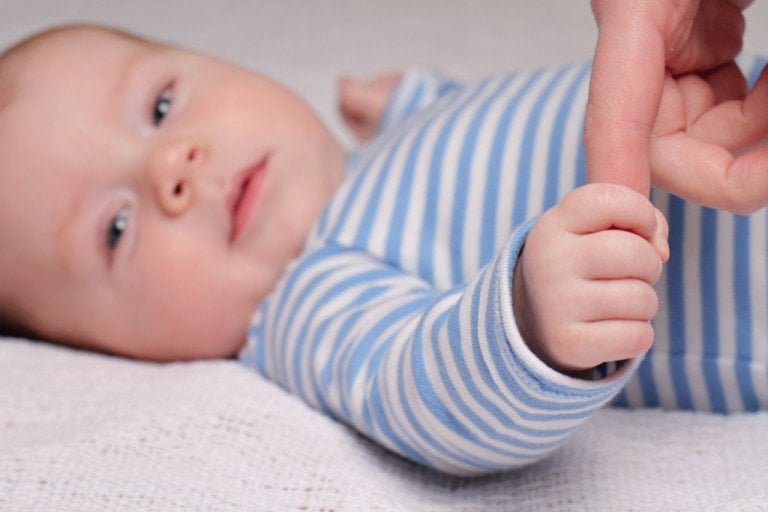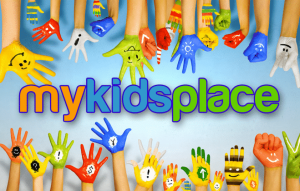Have you ever witnessed a child become very upset when separated from their caregiver? Now, think about what happens when the upset child reunites with that caregiver. How did they respond? The behavior seen upon reunion with a caregiver is a big indicator of what the child’s attachment status is. Keep reading to learn about the different types of attachment in children, how you can help develop a secure attachment, and why this is important.
Attachment Theory
Attachment theory is evolutionary based. Developmental theorists such as Abraham Maslow, Erik Erikson, and Harry Harlow all touched on the importance of the bond made between infants and their caregivers.
Maslow developed the hierarchy of needs where safety is a basic need. He argues you are unable to reach higher levels in the pyramid seen below without first feeling safe.

Erikson describes development as a series of crises that need to be managed. The first psychosocial crisis is the establishment of trust.
Harlow studied the way baby monkeys respond when they are separated from their mothers. He noticed that baby monkeys preferred a cuddly, towel-covered “mother” without any food to a wire mother that provided food. This indicates that survival alone is not the primary goal in development.

Attachment theory itself originated from John Bowlby’s work. Bowlby proposed that an infant’s early reflexes are meant to ensure their safety. Think of how it feels when a baby grabs your finger (palmar grasp reflex) or a newborn smiles at you (reflexive smiling). That overwhelming feeling of love or adoration drives the receiver to want to protect that child.
Types of Infant Attachment
Attachment is either secure or insecure, and either organized or disorganized. There are 4 main types of attachment including:
- Secure (Secure and Organized)
- Insecure-Avoidant (Insecure and Organized)
- Insecure-Ambivalent-Resistant (Insecure and Organized)
- Disorganized/Controlling (Insecure and Disorganized)
The most common type of attachment in the world is Secure Attachment. Babies that have secure attachment give clear messages about their needs. The caregiver also responds in a predictable, consistent manner. This allows the baby to feel safe and eventually explore their environment. The baby knows that they have a secure base to return to and look to in cases of strange situations.
Promoting Secure Attachment
Establishing a secure attachment with your child is all about “serve and return.” When your baby offers a “serve” (ex: babbling “ba-ba-ba”), they want to see how you respond or “return.”
Try repeating the sounds and match the number of syllables they made, “ba-ba-ba.” You can also start the interaction with your own serve. For a 6-month-old, try tapping on the tray of their high chair 3 times. Did they try to mimic this action? That is a serve and return! It is especially exciting for them to do this a few times and see you repeat their actions. This helps them start to understand that they have an effect on the people around them.
It is important to understand that every child is different. The response they need may be different than what is needed by other children, even siblings. A mismatch in serve-and-return interactions puts a strain on the dyad, or parent-child relationship.
If you are struggling with understanding your child’s cues or responding to their needs, please let us know. You may reach out to our occupational therapists or read our resources here to help you.
Consistency is Key!
It is important to be consistent in your responses when the child’s “serve” is a cry for help. Help them understand they are safe by consistently responding to their needs. Ignoring their cries for help may lead to an insecure form of attachment.
Babies are very attune to their caregivers, so be sure you are modeling confidence and being consistent. This will help the baby develop confidence in you. This also helps them communicate their needs more clearly. A baby receiving inconsistent responses learns that their needs will not always be met. This can lead to avoidance, where the child avoids asking for help because they do not trust it will come. In other cases, this can lead to a sense of ambivalence so the baby does not know how to ask for help. This type of baby will give mixed messages on their needs and often will be difficult to soothe.
Be a Good Model!
Additionally, it is important to model appropriate responses to new situations. For example, if a baby falls over while practicing sitting, they look to their caregiver for a response. An ideal response is calmly helping the baby back to sitting and says, “Wasn’t that surprising?” This helps the baby learn that they are okay.
On the other hand, rushing to the child’s side and anxiously pick teaches the baby something bad just happened. Generally, a baby responds by starting to cry. This will lead to anxiety and distress the next time they fall. Falling can be scary, but it is a natural part of learning! Show your baby you are there if something truly bad happens. Simultaneously, help understand that little mistakes are okay and we can move on.
In Summary…
Attachment is all about safety. Help your child feel safe and cared for. Let them know you are there to help with life’s major crises. Help them understand mistakes are okay. Be consistent! All of this will help your child establish secure attachment which will strengthen the dyad and benefit them in their future relationships.
Sources
Bath, H., PhD. (2008). The Three Pillars of Trauma-Informed Care. Reclaiming Children and Youth, Fall 2008, 17(3), 17-21.
Brandt, K., CNM, DNP, Perry, B. D., MD, PhD, Seligman, S., DMH, & Tronick, E., Phd (Eds.). (2014). Infant and early childhood mental health: Core concepts and clinical practice. Washington, D.C.: American Psychiatric Publishing, a Division of American Psychiatric Association.
Harlow’s Classic Studies Revealed the Importance of Maternal Contact. (2018, June 20). Retrieved June 16, 2020, from https://www.psychologicalscience.org/publications/observer/obsonline/harlows-classic-studies-revealed-the-importance-of-maternal-contact.html
Ham, Jacob. (2013). YouTube.com. https://www.youtube.com/channel/UCdpMZfwdxyqpvoC74eaF-2A
McLeod, S. A. (2009). Attachment Theory. Retrieved from www.simplypsychology.org/attachment.html




